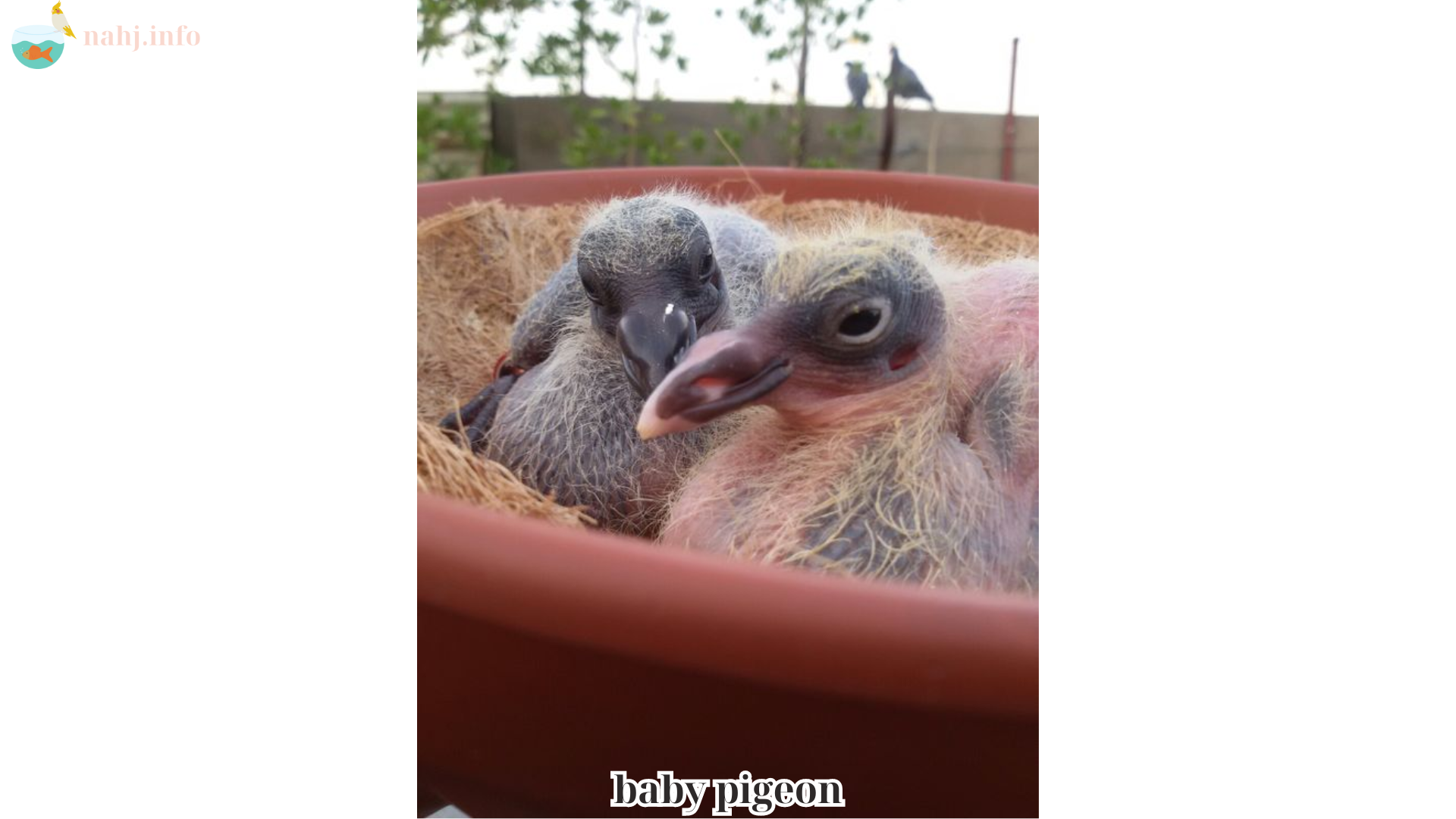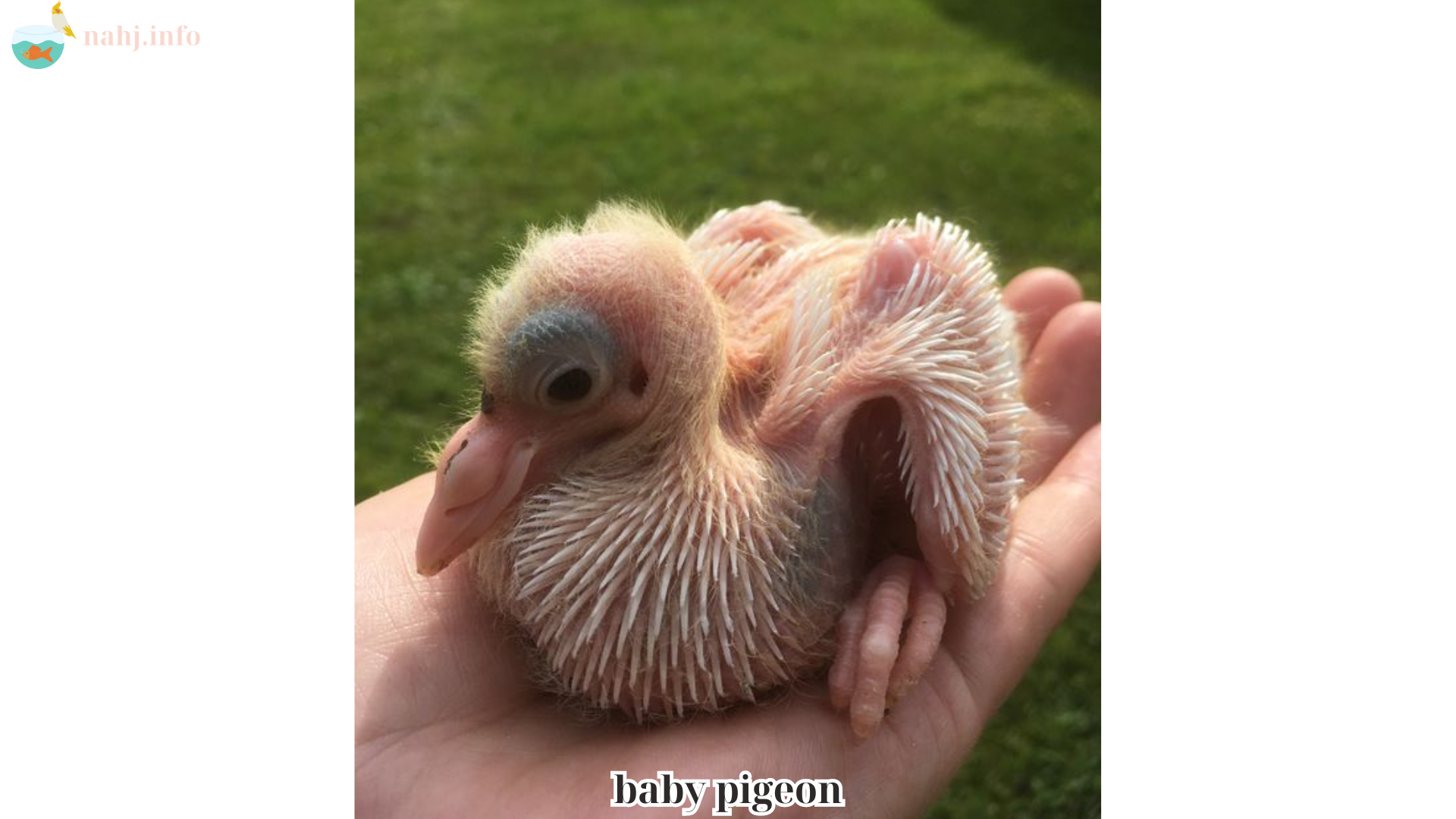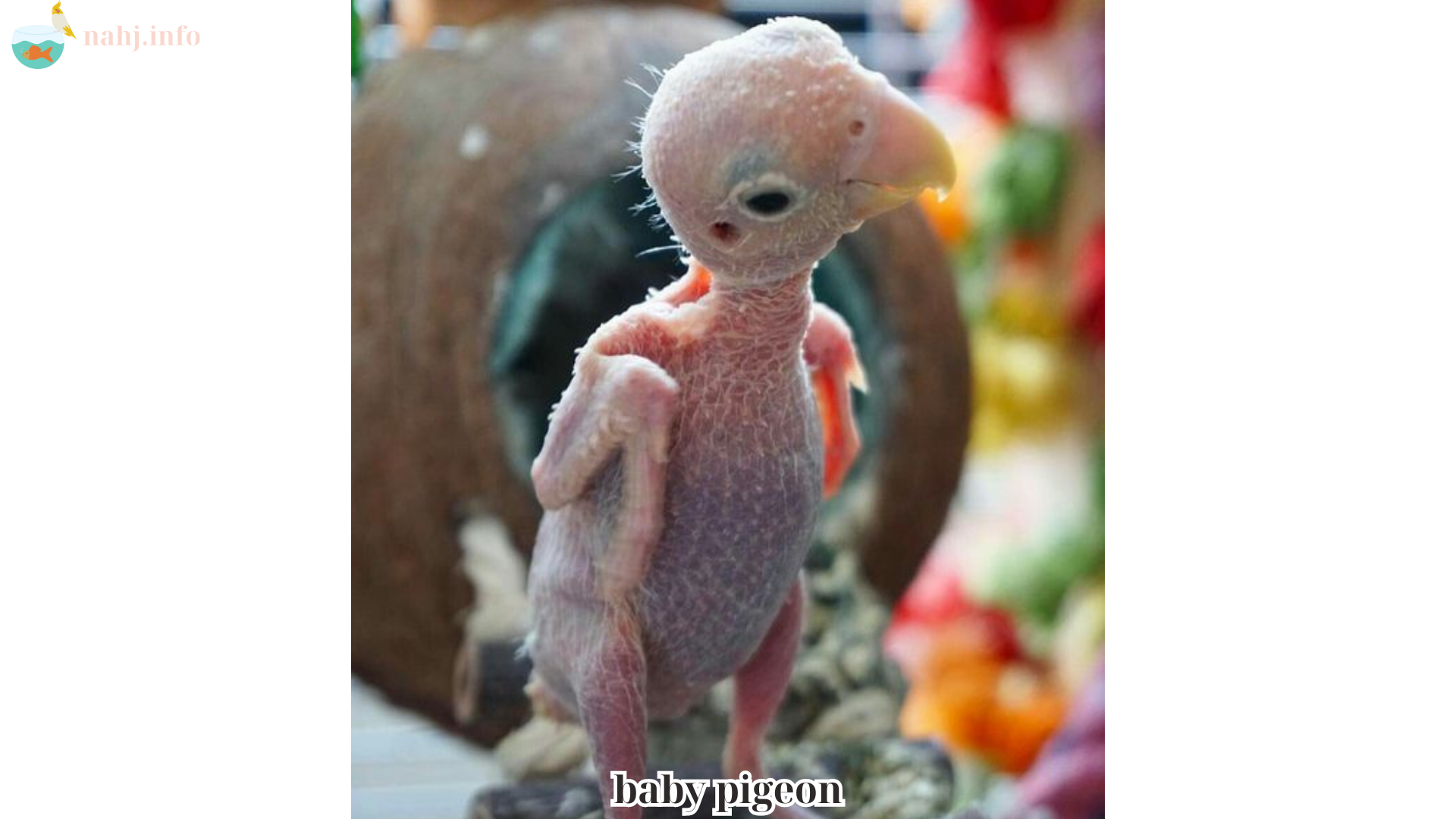Raising baby pigeons, also known as squabs, can be a rewarding experience. These delicate creatures require special attention and care to ensure they grow into healthy adult birds. Whether you’ve found an abandoned baby pigeon or you’re breeding pigeons, this comprehensive guide by Nahj will provide you with everything you need to know about baby pigeon care.
Table of Contents
ToggleBaby Pigeon Care: A Comprehensive Guide

Identification and Characteristics
Baby pigeons, or squabs, are typically hatched with sparse yellow down and closed eyes. They are altricial, meaning they are born helpless and rely completely on their parents or caregivers for warmth, nutrition, and protection. Squabs grow rapidly, and within a few weeks, they start to resemble adult pigeons.
Development Stages
- Hatchlings (0-7 days): Squabs are blind and featherless. They are entirely dependent on their parents for warmth and food.
- Nestlings (8-14 days): Their eyes begin to open, and pin feathers start to emerge. They become more active and start exploring their nest.
- Fledglings (15-30 days): Feathers continue to develop, and they start practicing flapping their wings. By the end of this stage, they will be ready to leave the nest.
Housing and Environment
Nesting Box
A secure and comfortable nesting box is essential for baby pigeons. If the parents are absent, you can create a substitute nest using a small box lined with soft materials like towels or paper towels. Ensure the nest is warm, clean, and safe from predators.
Temperature and Humidity
Maintaining the right temperature is crucial for the survival of baby pigeons, especially during the first few weeks. The ideal temperature should be around 95°F (35°C) for hatchlings, gradually decreasing as they grow older. Using a heating pad or a brooder can help maintain a consistent temperature. Humidity levels should be moderate to prevent dehydration and respiratory issues.
Feeding Baby Pigeons

Parent Feeding
In natural conditions, parent pigeons feed their squabs a nutrient-rich substance called “pigeon milk,” which is regurgitated from the parents’ crops. Pigeon milk provides essential nutrients for rapid growth and development.
Hand-Feeding
If you need to hand-feed baby pigeons, follow these steps:
- Formula Preparation: Use a commercial hand-rearing formula specifically designed for pigeons or doves. Mix it with warm water according to the instructions until it reaches a smooth, creamy consistency.
- Feeding Tools: Use a syringe or a specialized feeding tool to administer the formula. Ensure the tool is clean and sanitized before each feeding.
- Feeding Schedule: Feed hatchlings every 2-3 hours, including nighttime feedings. As they grow, gradually reduce the frequency to every 4-5 hours.
- Feeding Technique: Hold the baby pigeon gently and place the feeding tool in its beak. Allow the pigeon to suckle the formula at its own pace. Avoid force-feeding, as this can cause aspiration and other health issues.
Weaning Process
Around 3-4 weeks of age, squabs will start showing interest in solid food. Gradually introduce small seeds and grains into their diet while continuing with the formula. Observe their eating habits and ensure they are consuming enough solid food before completely weaning them off the formula.
Health and Hygiene
Common Health Issues
- Dehydration: Ensure baby pigeons have access to clean, fresh water at all times. Dehydration can be life-threatening.
- Respiratory Infections: Poor ventilation and high humidity can lead to respiratory infections. Keep the nesting area clean and well-ventilated.
- Parasites: Regularly check for signs of mites or lice and consult a veterinarian for appropriate treatment if needed.
Hygiene Practices
- Clean Nesting Area: Regularly clean the nesting box and replace the lining to prevent the buildup of waste and bacteria.
- Sanitize Feeding Tools: Ensure all feeding tools are thoroughly cleaned and sanitized before each use to prevent infections.
- Monitor Growth: Keep track of the squabs’ growth and development. Any sudden changes in behavior, appetite, or appearance should be addressed promptly.
Socialization and Training

Bonding
Building a bond with baby pigeons is crucial for their social development. Spend time with them daily, talking softly and handling them gently. This will help them get accustomed to human interaction and build trust.
Training
As the pigeons grow, you can start basic training to encourage independence and healthy behaviors. This includes encouraging them to perch, fly short distances, and explore their environment safely.
Preparing for Independence
Transitioning to an Outdoor Aviary
When the squabs are fully feathered and capable of sustained flight, they are ready to transition to an outdoor aviary. Ensure the aviary is secure, spacious, and provides protection from predators and harsh weather conditions.
Introducing to a Flock
If you have other pigeons, introduce the young pigeons to the flock gradually. Monitor their interactions to prevent bullying or aggressive behavior from older birds.
Conclusion
Raising baby pigeons requires dedication, patience, and attention to detail. By providing the right environment, nutrition, and care, you can ensure that squabs grow into healthy, strong, and well-adjusted adult pigeons. Whether you’re a seasoned breeder or a first-time caregiver, the joy of watching baby pigeons thrive under your care is a truly rewarding experience. Remember, every pigeon is unique, and adapting your care approach to meet their individual needs will help them reach their full potential.

